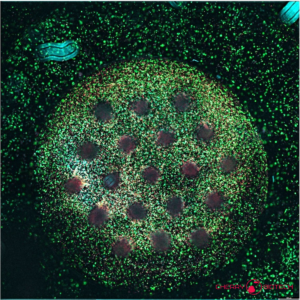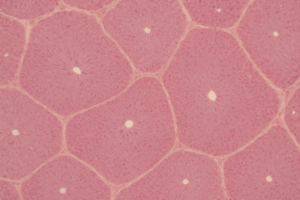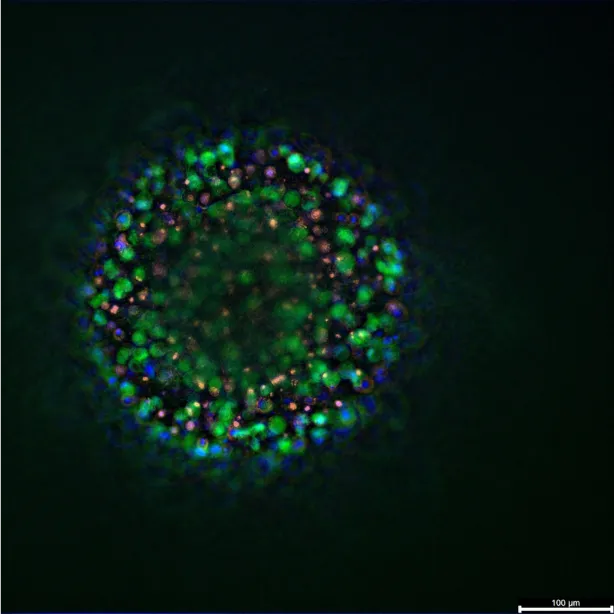
Breast cancer is the second cancer-related cause of death in women worldwide, therefore it is no surprise breast cancer sits second in top disease of worldwide pipeline drugs, highlighting the global effort to counter its burden. Behind these efforts stands academic, biotechnology and pharmaceutical stakeholders that drive innovation toward better care of patients.
In this article, we highlight these efforts and focus on the breast cancer trends in research and pharma from July and August 2025. First, we explore cutting-edge research directions, including breast cancer organoids, breast cancer-on-chip platforms, and 3D in vitro models that serve as new approach methodologies (NAMs) to better understand tumor biology and resistance. Second, we review industry updates: regulatory milestones, clinical trial progress, and new targeted therapies shaping breast cancer drug discovery.
Learn more about our ready to use breast cancer organoid models.
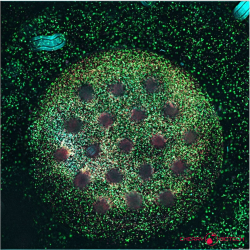
Academic Research Trends
The use of NAMs is transforming breast cancer research by offering human-relevant, animal-free systems that better replicate the complexity of tumors. Organoids, breast cancer-on-chip platforms, and advanced 3D in vitro models allow scientists to study tumor biology, drug response, and resistance mechanisms with unprecedented fidelity. These systems are increasingly viewed by the pharmaceutical industry as essential translational tools, bridging basic research and clinical application supported by regulatory pushes such as the FDA’s Modernization Act III.. Through a PubMed-based retrieval and analysis of recent publications, we identified three dominant academic trends that are shaping the field: AI/omics biomarkers, immuno-TME research, and DNA damage/PARP biology.
AI, Omics & Biomarkers
A major trend in breast cancer research is the integration of artificial intelligence (AI), multi-omics, and biomarker discovery with NAMs such as breast cancer organoids and breast cancer-on-chip platforms. The FDA has already recognized AI/ML and omics, in combination with advanced 3D in vitro models, as tools capable of generating regulatory-relevant data for IND submissions. Academic research is rapidly adopting this trio to map resistance, stratify patients, and identify new therapeutic opportunities.
Sun et al. (Gut) used single-cell and spatial transcriptomics in breast cancer 3D organoid models to profile cancer-associated fibroblasts, defining an endothelial-like CAF state that drives angiogenesis and invasion. This omics approach also revealed stromal programs that may serve as biomarkers for disease aggressiveness. In parallel, Jiang et al. (Nature Communication) applied AI-driven virtual screening and modeling to identify Bufalin as a molecular glue degrader of estrogen receptor alpha, then validated its effect in breast cancer organoids, highlighting how AI can accelerate discovery of next-generation ER-targeting therapies. Extending biomarker applications, Zhang et al. combined multi-omics profiling with exosome–tumor–vascular co-cultures in organoid systems, uncovering molecular signatures linked to vascular remodeling and therapeutic resistance.
Immunotherapy & Tumor Microenvironment
Immunotherapy continues to dominate breast cancer research, yet its success is often limited by resistance mechanisms rooted in the tumor microenvironment (TME). Stromal cells, immune infiltrates, and the extracellular matrix (ECM) all contribute to immune evasion, epithelial–mesenchymal transition (EMT), and metastatic spread. Incorporating these components into advanced 3D in vitro models such as breast cancer organoids and breast cancer-on-chip systems provides new opportunities to understand how the TME shapes treatment outcomes.
For instance, Chen et al. (Biomaterials, 2025) designed multimodal cascade-amplified phototheranostics in breast cancer organoid models, showing that photodynamic therapy can synergize with immune checkpoint blockade to induce immunogenic cell death. Piwocka et al. (Scientific Reports) introduced tetraculture spheroids integrating tumor, stromal, endothelial, and immune cells, a personalized 3D breast cancer model where responses to immunotherapy could be assessed in the presence of a complex TME. Pezeshki et al. (Scientific Reports) explored patient-derived scaffolds to replicate the ECM, demonstrating that ECM stiffness and composition directly enhance invasive gene programs, influencing metastasis and resistance to immune-based therapies.
DNA Damage, HRD & PARP Biology
The DNA damage response remains a cornerstone of breast cancer research, with particular focus on homologous recombination deficiency (HRD) and therapeutic strategies involving PARP inhibitors. By integrating these pathways into NAMs, investigators are gaining deeper insights into how genomic instability and microenvironmental cues influence therapy response.
Jones et al. (Scientific Reports, 2025) demonstrated how matrix stiffness alters aldehyde dehydrogenase activity and DNA damage signaling in breast cancer organoids, showing that physical properties of the microenvironment can reprogram DNA repair dynamics and potentially modulate sensitivity to DNA-targeting drugs. Oliveira et al. (Cancer Research, 2025) explored epigenetic heritability of cell plasticity, revealing that transcriptional reprogramming in breast cancer organoids drives the emergence of HRD-like states, providing a mechanistic link between plasticity and genomic instability. Adding a therapeutic perspective, Khoury et al. (Journal of Controlled Release, 2025) developed radiation-guided nanoparticles combined with PARP inhibitors in breast cancer spheroids, enhancing immunotherapy efficacy by exploiting DNA repair vulnerabilities and promoting immunogenic cell death.
Pharma & Biotech News
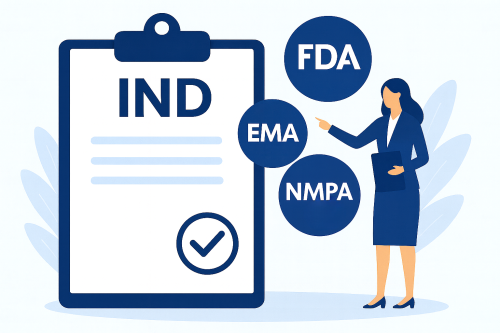
In parallel with academic advances, the pharmaceutical and biotechnology sectors announced several important updates in breast cancer drug development over July and August 2025
Datopotamab deruxtecan (Dato-DXd, Daiichi Sankyo/AstraZeneca) – NMPA Approval in China
On August 25, 2025, China’s NMPA approved DATROWAY® (datopotamab deruxtecan) for patients with unresectable or metastatic hormone receptor–positive, HER2-negative breast cancer who had previously received endocrine therapy and at least one line of chemotherapy. This marks the first approval of DATROWAY in China and the second DXd antibody-drug conjugate approved in the country following ENHERTU. Approval was based on the phase 3 TROPION-Breast01 trial, which showed a 37% reduction in the risk of disease progression or death versus chemotherapy, with median progression-free survival of 6.9 months compared to 4.9 months and higher objective response rates (36% vs. 23%). In the China subgroup, median PFS was 8.1 months versus 4.2 months with chemotherapy. DATROWAY is a TROP2-directed ADC developed by Daiichi Sankyo and AstraZeneca, designed to deliver a topoisomerase I inhibitor payload selectively to tumor cells, expanding treatment options for HR-positive, HER2-negative metastatic breast cancer.
Patritumab deruxtecan (HER3-DXd, Daiichi Sankyo/Merck) – Phase 3 Trial Initiated
In August, Daiichi Sankyo and Merck announced the dosing of the first patient in the HERTHENA-Breast04 phase 3 trial, evaluating patritumab deruxtecan versus physician’s choice of treatment in patients with unresectable locally advanced or metastatic hormone receptor–positive, HER2-negative breast cancer who progressed following endocrine therapy and CDK4/6 inhibitors. HER3 is broadly expressed in breast tumors and linked to poor outcomes, yet no HER3-directed therapy is currently approved. Patritumab deruxtecan is a specifically engineered HER3-directed ADC designed to deliver a topoisomerase I inhibitor payload directly to HER3-positive tumor cells, aiming to overcome resistance and improve survival in this hard-to-treat setting.
Enhertu plus Perjeta (Daiichi Sankyo/AstraZeneca/Roche) – FDA Breakthrough Therapy Designation
In August, the FDA granted breakthrough therapy designation to first-line treatment with Enhertu (fam-trastuzumab deruxtecan-nxki) plus Perjeta (pertuzumab) for patients with unresectable or metastatic HER2-positive breast cancer. The designation, which expedites review for promising therapies, was based on phase 3 data from the DESTINY-Breast09 trial, presented at ASCO 2025. The study showed that Enhertu plus Perjeta nearly doubled progression-free survival compared with standard care (40.7 months vs. 26.9 months), representing an improvement of nearly 14 months. This marks the ninth breakthrough therapy designation for Enhertu and highlights its growing role in redefining the treatment landscape for HER2-positive metastatic breast cancer.
Vepdegestrant (Arvinas/Pfizer) – NDA Accepted by FDA
The US FDA has accepted a new drug application (NDA) for vepdegestrant, an investigational oral PROteolysis TArgeting Chimera (PROTAC) developed by Arvinas and Pfizer. The NDA seeks approval for vepdegestrant as a monotherapy for patients with ER-positive, HER2-negative, ESR1-mutated advanced or metastatic breast cancer who have progressed on prior endocrine-based therapy. Data supporting the application come from the phase 3 VERITAC-2 trial, which showed that vepdegestrant improved median progression-free survival to 5.0 months compared with 2.1 months for fulvestrant in the ESR1-mutant subgroup (HR 0.57; p<0.001). The drug demonstrated favorable tolerability and represents a novel mechanism of action by degrading the estrogen receptor, potentially overcoming endocrine resistance. The FDA has set a Prescription Drug User Fee Act (PDUFA) decision date of June 5, 2026.
Inavolisib (Itovebi, Roche) – EMA Approval in Europe
The combination of inavolisib (Itovebi) with palbociclib (Ibrance) and fulvestrant (Faslodex) won European approval for the treatment of patients with PIK3CA-mutated, ER-positive, HER2-negative, locally advanced or metastatic breast cancer after recurrence on or within 12 months of completing adjuvant endocrine therapy. The regimen had already been approved in the US in October 2024. Both approvals were supported by the phase 3 INAVO120 trial, which demonstrated a median progression-free survival of 17.2 months with inavolisib versus 7.3 months with palbociclib plus fulvestrant alone (HR 0.42). Updated data presented at ASCO 2025 also showed an overall survival benefit of 34.0 months versus 27.0 months, alongside a higher overall response rate (62.7% vs. 28%). Inavolisib, a PI3Kα inhibitor, represents the first treatment of its kind to improve survival outcomes in PIK3CA-mutated ER-positive advanced breast cancer, addressing an important unmet clinical need.
PQ203 (ProteinQure) – FDA Fast Track & Phase 1 Trial Clearance
Regulatory agencies in the United States and Canada have cleared a phase 1 clinical trial of PQ203, a novel peptide drug conjugate, in patients with advanced triple-negative breast cancer (TNBC). The US FDA has also granted fast track designation to the therapy, reflecting its potential to address an unmet medical need in this aggressive subtype. Developed by ProteinQure using a platform that combines physics-based modeling and generative machine learning, PQ203 is designed to target the Sortilin receptor, highly expressed in TNBC, and deliver a cytotoxic payload directly to tumor cells. Preclinical data showed efficacy even in models resistant to sacituzumab govitecan. The phase 1 trial will begin at Princess Margaret Cancer Centre in Toronto, with expansion to US sites, and will assess safety, tolerability, pharmacokinetics, and early signals of efficacy.
(Z)-Endoxifen (Atossa Therapeutics) – Phase 2 Trial Planned
Atossa Therapeutics has announced plans for a global Phase 2 dose-ranging trial of (Z)-endoxifen monotherapy in women with metastatic breast cancer, designed with guidance from the FDA to inform a subsequent Phase 3 trial. The study, to be managed by PSI, will evaluate safety, pharmacokinetics/pharmacodynamics, and preliminary anti-tumor activity, with IND filing expected in Q4 2025 and topline results anticipated in 2026. (Z)-endoxifen is a potent selective estrogen receptor modulator/degrader (SERM/D) that has shown clinical activity even in tumors resistant to aromatase inhibitors and fulvestrant. If successful, it could reshape the standard of care in metastatic breast cancer by addressing resistance mechanisms and expanding treatment options.
FAQ
Breast cancer research is changing with the adoption of human-relevant, animal-free systems. These models are considered better at replicating the intricate nature of tumours. Organoids, breast cancer-on-chip platforms, and other three-dimensional in vitro models are included in this category. They permit scientists to study tumour biology, drug response, and resistance mechanisms with higher fidelity. These systems are increasingly viewed by the pharmaceutical industry as translational tools. A bridge between basic research and clinical application is provided by them. Regulatory bodies, such as the FDA through its Modernization Act III, have also supported their use.
One major research direction is the integration of artificial intelligence, multi-omics, and biomarker discovery. These computational methods are being used with breast cancer organoids and on-chip platforms. The FDA has acknowledged that this combination is capable of generating regulatory-relevant data for submissions. Academic research is using this trio of methods. Resistance is being mapped, and patients are being stratified. New therapeutic opportunities are also being identified. For example, AI-driven virtual screening was applied to identify Bufalin. This compound was found to be a molecular glue degrader of estrogen receptor alpha. Its effect was then validated in breast cancer organoids.
Primary human hepatocytes (PHHs) are considered the benchmark for physiological relevance. In conventional culture, PHHs lose function quickly. Their performance is different within liver-on-chip systems. In these devices, they receive perfusion and exist in a three-dimensional context. They are also co-cultured with non-parenchymal cells. These conditions allow them to sustain albumin and urea secretion. Transporter activity and stable CYP450 expression are also maintained for weeks. It was demonstrated that species-specific liver chips containing PHHs could replicate known interspecies differences in drug-induced liver injury. This finding highlights their translational value for studies.
The DNA damage response remains a central topic in breast cancer research. A particular focus is placed on homologous recombination deficiency (HRD). Therapeutic strategies that involve PARP inhibitors are also studied. These pathways are being integrated into new research models. Deeper insights are being gained by investigators. They are learning how genomic instability and microenvironmental cues influence therapy response. For instance, it was shown how matrix stiffness alters DNA damage signaling in breast cancer organoids. The physical properties of the microenvironment were found to reprogram DNA repair dynamics. This may modulate sensitivity to drugs that target DNA.
Datopotamab deruxtecan, also known as DATROWAY®, was approved in China by the NMPA in August 2025. This approval is for patients with unresectable or metastatic hormone receptor–positive, HER2-negative breast cancer. The patients must have previously received endocrine therapy and at least one line of chemotherapy. This is the first approval for DATROWAY in China. It is a TROP2-directed antibody-drug conjugate (ADC). It was developed by Daiichi Sankyo and AstraZeneca. A topoisomerase I inhibitor payload is delivered selectively to tumour cells by this ADC. The approval was based on the TROPION-Breast01 trial. A 37% reduction in the risk of disease progression or death was shown.
In August 2025, the dosing of the first patient in the HERTHENA-Breast04 phase 3 trial was announced by Daiichi Sankyo and Merck. This trial is evaluating patritumab deruxtecan. It is being compared to the physician’s choice of treatment. The patients in the trial have unresectable locally advanced or metastatic hormone receptor–positive, HER2-negative breast cancer. These patients must have progressed after receiving endocrine therapy and CDK4/6 inhibitors. The HER3 protein is broadly expressed in breast tumours. It is linked to poor outcomes. Patritumab deruxtecan is a HER3-directed ADC. It is engineered to deliver a topoisomerase I inhibitor payload to HER3-positive tumour cells.
Breakthrough therapy designation was granted by the FDA in August 2025. This designation was for the first-line treatment combination of Enhertu (fam-trastuzumab deruxtecan-nxki) and Perjeta (pertuzumab). It is for patients with unresectable or metastatic HER2-positive breast cancer. The designation, which expedites the review process for promising therapies, was based on phase 3 data. The data came from the DESTINY-Breast09 trial. It was shown in the study that Enhertu plus Perjeta nearly doubled progression-free survival when compared with standard care. The improvement was 40.7 months versus 26.9 months. This represents the ninth breakthrough therapy designation for Enhertu.
A new drug application (NDA) for vepdegestrant has been accepted by the US FDA. Vepdegestrant is an investigational oral PROteolysis TArgeting Chimera (PROTAC). It was developed by Arvinas and Pfizer. Approval is being sought for its use as a monotherapy. It is intended for patients with ER-positive, HER2-negative, ESR1-mutated advanced or metastatic breast cancer. These patients must have progressed on prior endocrine-based therapy. Data supporting the application came from the VERITAC-2 trial. It was shown that vepdegestrant improved median progression-free survival to 5.0 months, compared with 2.1 months for fulvestrant in the ESR1-mutant subgroup. A PDUFA decision date has been set for June 5, 2026.
Yes, European approval was won for the combination of inavolisib (Itovebi) with palbociclib (Ibrance) and fulvestrant (Faslodex). This treatment is for patients with PIK3CA-mutated, ER-positive, HER2-negative, locally advanced or metastatic breast cancer. It is for patients who recurred on or within 12 months of completing adjuvant endocrine therapy. This regimen was already approved in the US in October 2024. The phase 3 INAVO120 trial supported both approvals. A median progression-free survival of 17.2 months with inavolisib was demonstrated. This compared to 7.3 months with palbociclib plus fulvestrant alone. Inavolisib is a PI3Kα inhibitor.
A phase 1 clinical trial of PQ203 has been cleared by regulatory agencies in the United States and Canada. PQ203 is a novel peptide drug conjugate. The trial is for patients with advanced triple-negative breast cancer (TNBC). Fast track designation has also been granted to the therapy by the US FDA. This reflects its potential to address an unmet medical need. PQ203 was developed by ProteinQure. A platform combining physics-based modeling and generative machine learning was used. The drug is designed to target the Sortilin receptor. This receptor is highly expressed in TNBC. A cytotoxic payload is delivered directly to tumour cells. The phase 1 trial will assess safety, tolerability, and early signs of efficacy.

